It is thanks to them that we know that there are different blood groups, and that vegetables and fruits contain vitamins. We owe them vaccines for polio and typhus. Unfortunately, they are like Leonardo di Caprio before 2016 - they seem to deserve the main award in their industry, and yet the Nobel Prize passed their nose.
We present a gallery of eight outstanding Polish scientists who may have made groundbreaking discoveries, but in the case of the Nobel Prize, they had to get away with taste. Of course, these are not all the nominated Poles who did not win the award in the end, but with regard to these gentlemen, one can really say:it was close.
1. Kazimierz Funk (1884–1967)
At that time, the causes of many diseases were sought, such as beriberi, scurvy, rickets ... The search for these causes involves the discovery of vitamins - writes Marek Borucki in the first volume of the book "Great Forgotten. Poles who changed the world ”.
Funk secreted the first vitamin from rice bran - B1 . He came up with the very name "vitamin" by concatenating the Latin words vita - life and amine - chemical compound containing an amino group.
In the years that followed, he isolated other vitamins and gave rise to a whole new branch of medicine. He has also been involved in insulin research - thanks to him, Poland became the third producer in the world.

Świat Młodych from 1962 wrote about the discoverer of vitamins, Kazimierz Funk. Photo and caption from Marek Borucki's book “Great Forgotten. Poles who changed the world ”.
He was nominated for the Nobel Prize four times: in 1914, 1925, 1926 and 1946. Unfortunately, he was never granted it, despite such a huge contribution to the development of medicine - comments Borucki.
2. Kazimierz Fajans (1887 - 1975)
The Polish physicochemist discovered the law of radioactive displacement in 1912 . It allows you to easily determine the position of all known radioactive elements on the Mendeleev table. At the same time, the physicist Frederick Soddy achieved similar results, which is why this law was called the Soddy-Fajans rule.
Apart from the radioactivity of the Pole, he was also involved in researching crystals and particles. He created a method to judge whether molecules are linked by a covalent or ionic bond, now known as Fayans' rule.
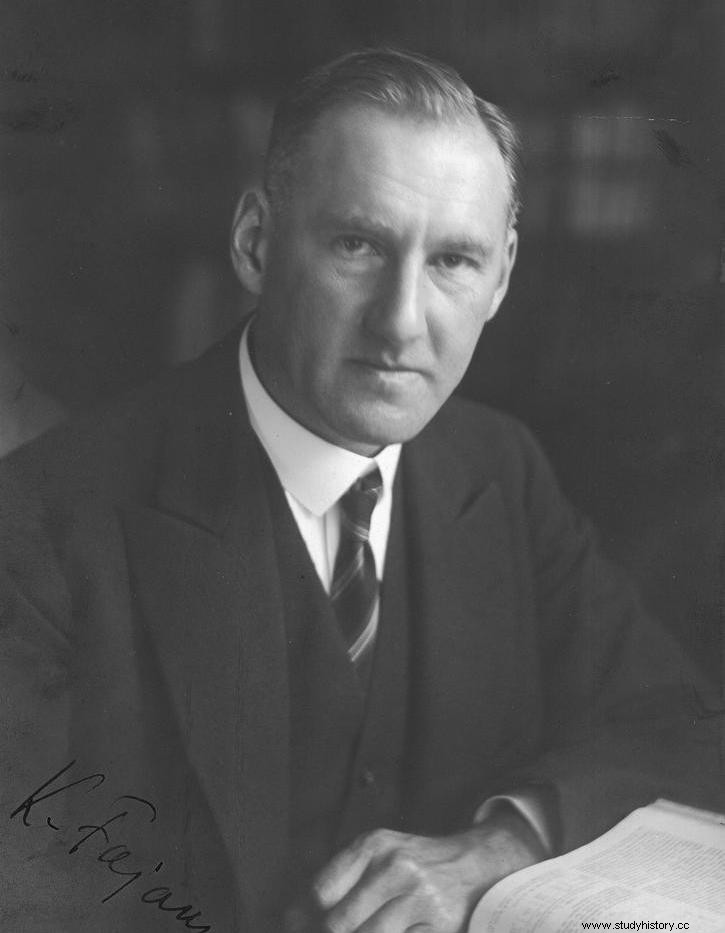
Despite undeniable merits, Kazimierz Fajans did not receive the Nobel Prize "for punishment" (source:public domain).
Although he was almost a sure thing for the 1924 chemical Nobel Prize, he did not get it ... as a punishment! And not because of their own faults, but because of the indiscretion of the Swedish press. The daily Svenska Dagbladet, usually well informed on the subject of the award, asked the scholar to send a photo to illustrate the article about the verdict. Other media officially wrote about a certain victory for Fajans.
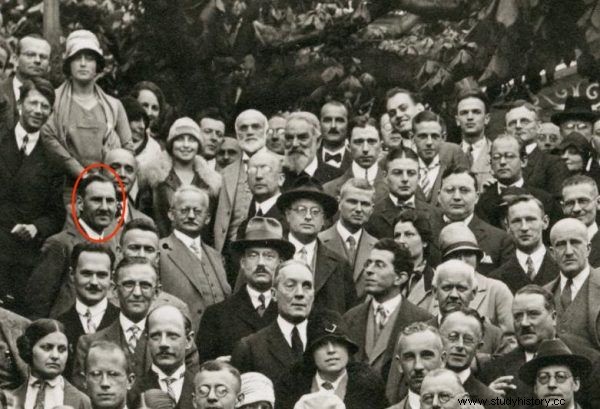
Kazimierz Fajans in a photo taken during the congress in Munich, 1928 (photo:Friedrich Hund; license CC BY 3.0).
After that, the Committee announced that this year the prize in physics and chemistry would not be awarded to anyone! Apparently just to punish unnecessarily babbling journalists. The next two nominations also did not bring the scholar Nobel.
3. Wojciech Świętosławski (1881 - 1968)
Another would-be Polish Nobel Prize winner in the field of chemistry. His thesis, in which he laid out the theory of the structure of diazo compounds and oximes, was so good that it was accepted as a doctorate.
After Poland regained independence in 1918, he abandoned the laboratory in Moscow and returned to the country. He worked at the Warsaw University of Technology, devoted to calorimetry - researching heat measurement techniques resulting from chemical reactions and various physical processes.

The outstanding chemist professor Wojciech Świętosławski in the photo from the period in which he was the rector of the Warsaw University of Technology (source:public domain).
Świętosławski constructed measuring devices that made it possible, inter alia, to determine the previously unmeasurable heat values the radiation of the uranium blende, the heat of absorption of the penetrating rays and the heat of hydration of cements.
The Polish chemist also invented the - cryometer an instrument for very precise determination of the melting and freezing point of solutions and determination of the degree of purity of a substance. Thanks to him, the cost of such research fell from about fifty thousand dollars to ten.
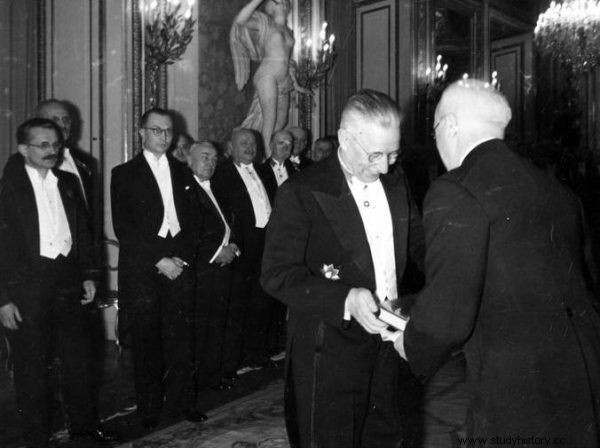
The Nobel Committee has never appreciated Świętosławski's scientific achievements, but he could count on the highest honors on the Vistula River. In the years 1935–1939 he even held the position of minister of religious denominations and public enlightenment (source:public domain).
Fifteen people nominated him for the Nobel Prize. He was nominated in 1936, 1950, 1957, 1958, 1960 and 1962. Why did the Committee pass it over? His judgments are unexplored…
4. Rudolf Stefan Weigl (1883 - 1957)
Rudolf Stefan Weigl, "Pole by choice," as Marek Borucki calls him, studied zoology at the University of Lviv. During World War I, he worked in Vienna as a military bacteriologist. The author of the book "Great Forgotten Poles" writes:
He later volunteered at an infectious diseases hospital where he was being treated for typhus. He worked in POW camps in Moravia and in military hospitals in Tarnów and Przemyśl (...). He then decided to overcome typhus that has decimated the people of the world.
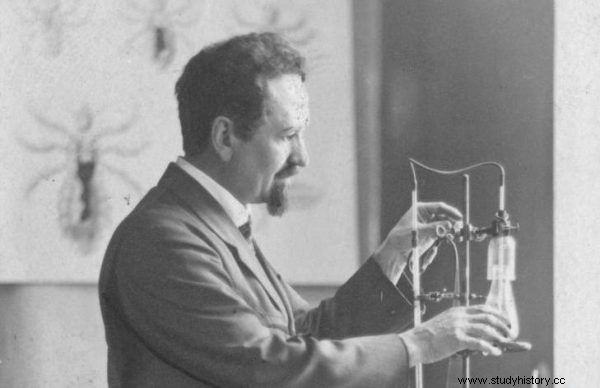
Stefan Weigl has been nominated for the Nobel Prize nine times! (source:public domain).
The scientist used lice as laboratory animals and as a material for the production of a vaccine . The first serum wasn't perfect - tried them on himself and became seriously ill. But in the end, the research had the desired effect. His vaccine saved many lives.
Weigl was nominated for the medical Nobel Prize so many times that it must have been boring . He was nominated in 1930, 1931, 1932, 1933, 1934, 1936, 1937, 1938 and 1939. However, after the war, the Polish government withdrew its support for Weigl as a result of false accusations of collaboration with the Nazis.
The scientist underwent a real identity test, because even during the war, the Germans offered him citizenship, taking up a professorship in Berlin and support in his efforts for the Nobel Prize. And Rudolf, guided by Polish patriotism, always rejected these proposals.
5. Mieczysław Wolfke (1883–1947)
The Polish physicist obtained his postdoctoral degree in 1913 with Albert Einstein himself . When he was only seventeen, he created and patented the prototype of the TV which he called "wireless electroscope". And it was only the first in a series of his inventions.
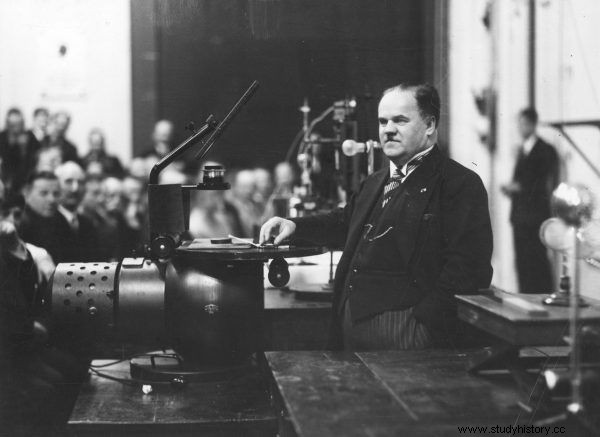
Professor Mieczysław Wolfke during his lecture entitled "New elementary particles" with experimental equipment, March 1935 (source:NAC). Photo and caption from Marek Borucki's book “Great Forgotten. Poles who changed the world ”- part 2.
His broad scientific interests were, on the one hand, a proof of genius, and on the other hand, they became the reason for the lack of achievements equal to the Nobel Prize. As Marek Borucki describes it in his book:
(...) the professor conducted holography research , it is a hitherto unknown method of creating three-dimensional images on a photographic plate. He showed the possibility of using interference to record information, i.e. the interaction of two or more elements of phenomena.
Although he published an article about the results of his work in the journal Physikalische Zeitschrift, did not deal with this important discovery anymore, absorbed in other research .
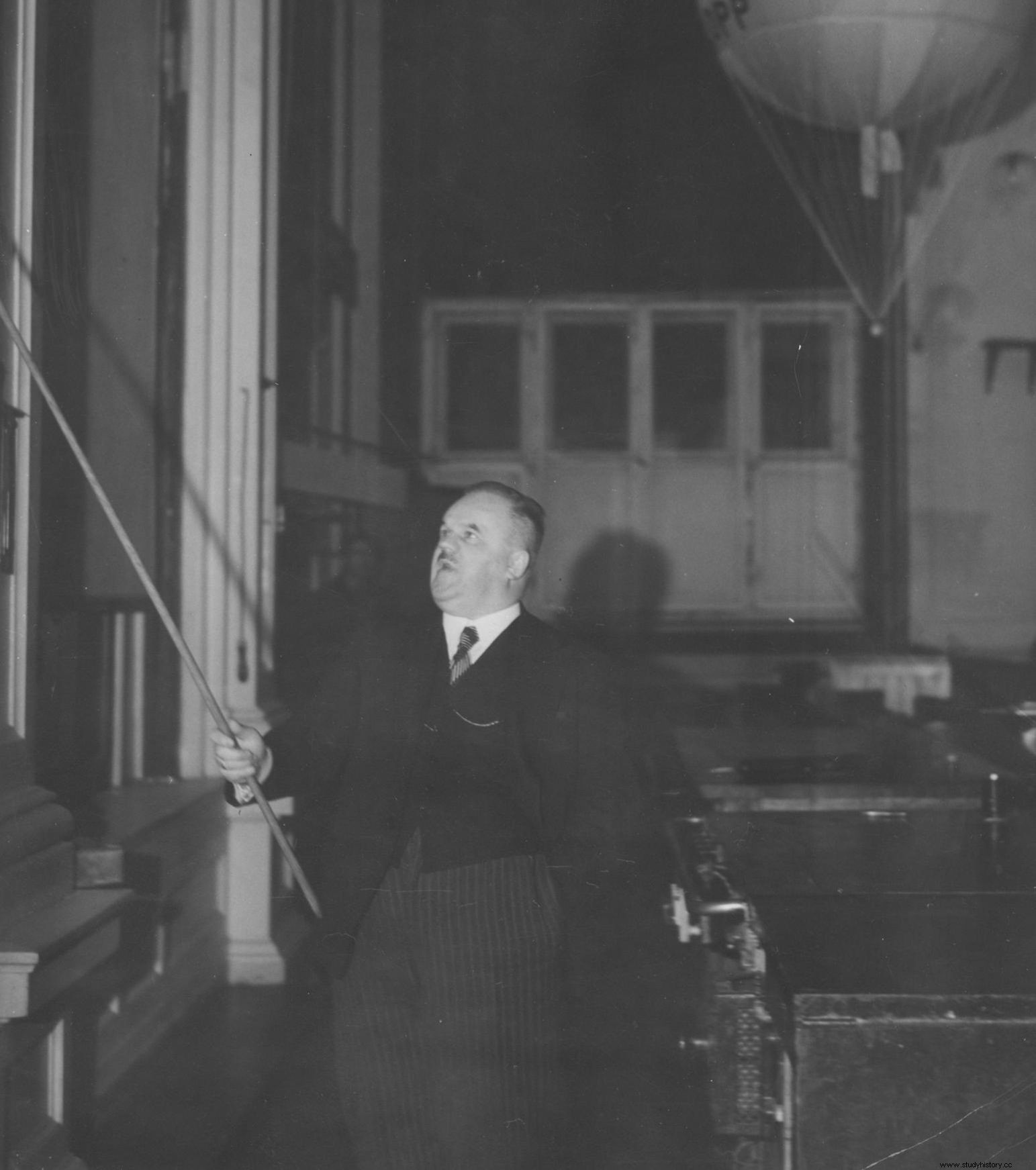
If Mieczysław Wolfke had not abandoned research on holography, he would probably have received the Nobel Prize, not Dennis Gabor (source:NAC). A photo from the book by Marek Borucki, “Great Forgotten. Poles who changed the world ”- part 2.
It was a mistake. If Wolfke had focused on holography, he could have achieved immortal fame. Other scientists benefited from his discoveries. In the years 1948–1951, research on obtaining three-dimensional images, with positive results, was conducted by a British physicist of Hungarian origin, Dennis Gabor. In 1971 he was awarded the Nobel Prize for them.
6. Ludwik Hirszfeld (1884–1954)
Ludwik Hirszfeld is a Polish doctor, bacteriologist, immunologist, and above all - the creator of a new field of science:seroanthropology. For example, it examines the prevalence of particular blood groups in different ethnic groups. Too confusing? Hirszfeld can be remembered quite simply:he gave the names to the blood groups .
Thanks to him, blood transfusions were no longer a lottery after which the patient survives for unknown reasons. From that moment on, it was known that the blood of a specific group had to be transfused for the procedure to be successful.
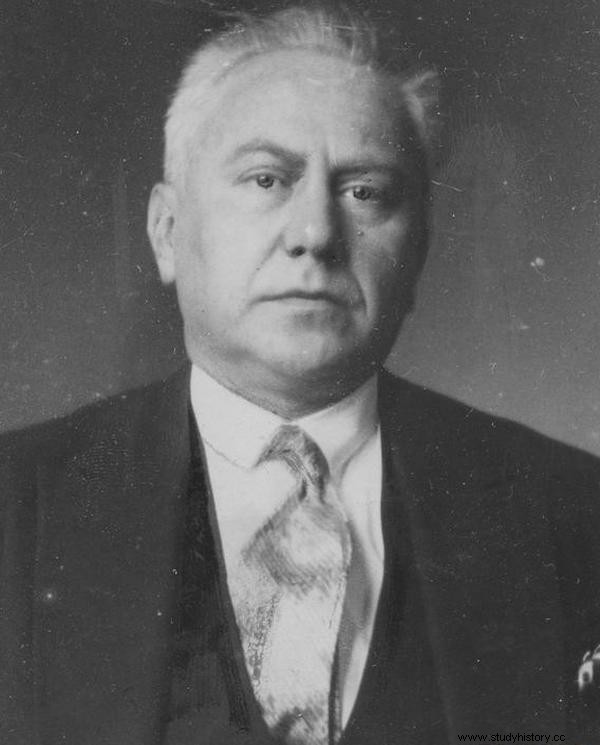
Ludwik Hirszfeld, founder of a new field of science - seroanthropology (source:public domain).
On January 9, 1950, the outstanding scientist was nominated for the Nobel Prize in Physiology and Medicine. He was nominated by the American professor of immunology and bacteriology Ernest Witebsky (1901–1969). However, he did not receive the award, to the amazement of the scientific world (…) - concludes Borucki in the 2nd volume of the book "The Great Forgotten Poles who Changed the World".
7. Rafał Lemkin (1900–1959)
The Polish criminal lawyer was appreciated in the international arena and invited to conferences on the unification of criminal law. The Madrid conference of 1933 turned out to be the most important for him. In his speech, he called for the establishment of a convention by the League of Nations enabling prosecution for crimes against humanity .
It was he who coined the term "genocide" - "genocide" . He studied the slaughter of the Armenians, the Great Famine in Ukraine, and finally the Holocaust. Shoah survived particularly painfully, because despite the fact that he was safe himself (he was in the USA at the time), the Nazis murdered over forty members of his family. But his work was not in vain. Borucki writes:
The term "genocide" spread around the world and was first used during the Nuremberg war crimes trial. Lemkin was involved in this trial as an advisor to US Supreme Court Justice Robert H. Jackson, America's Chief Prosecutor of War Crimes.

Rafał Lemkin (in the photo is first from the right) was nominated for the Nobel Peace Prize almost throughout the 1950s (source:Culturaldiplomacy; license CC BY 3.0).
Rafał Lemkin received ten nominations for the Nobel Peace Prize . His candidacy was submitted throughout the 1950s (first in 1950, last - in 1959), and yet he never received it. It seems all the more it is strange that later the Peace Prize was awarded to people of dubious merit to humanity . - says Marek Borucki.
8. Hilary Koprowski (1916–2013)
Hilary Koprowski, known as the Pasteur of the Vistula River, had two passions:biology and playing the piano. At the same time, he was graduating from medical studies and a music conservatory in Warsaw. World War II forced him to leave the country.
In the United States, worked on a vaccine against the polio virus that causes Heine-Medina disease , also called childhood paralysis. He was successful in 1949. Oral vaccin, prepared by him, proved to be effective, and a year later it was administered to the first child.
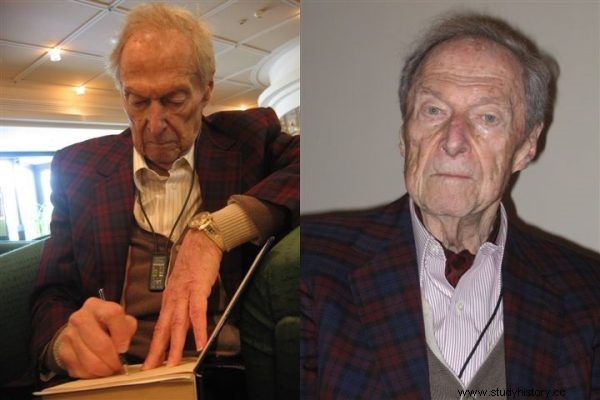
Hilary Koprowski, a brilliant chemist and piano lover (photo:Mariusz Kubik; license CC BY 3.0).
Many scientists around the world expressed their regret that Hilary Koprowski was not awarded the Nobel Prize for such a significant epochal discovery, and it was even called a great scandal - reports Marek Borucki. The more so that in 1954 the award was given to the American microbiologist John Franklin Enders, just for polio research.
***
These are, of course, not all Poles who have rubbed the Nobel Prize. After all, in 2012 we kept our fingers crossed for Aleksander Wolszczan, the discoverer of the first planets outside the Solar System. Professor Krzysztof Matyjaszewski, one of the most cited chemists in the world, and Professor Wacław Szybalski, whose works have opened the way to gene therapy, have also been waiting for the Nobel Prize for years.
But these gentlemen are alive (we wish you one hundred years, and we wish Professor Szybalski one hundred and fifty!) And their chance for the most prestigious award in the scientific world has not yet died down. The eight listed above will forever remain, unfortunately, geniuses who almost they were awarded the Nobel Prize.
Bibliography:
- Borucki Marek, Great Forgotten People. Poles who changed the world , Muza publishing house, Warsaw 2015.
- Same, Great Forgotten. Poles who changed the world part 2, Muza publishing house, Warsaw 2016.
- Cieśliński Piotr, Will Aleksander Wolszczan get Nobel in physics ?, Gazeta Wyborcza, October 7, 2012 [access:May 11, 2016].
- Chojnacka Justyna, Kazimierz Fajans and nuclear reaction research , "Nature - Toruń notebooks", issue 1, [access:11.05.2016].
- Fuksa Janusz, Memories from Kiev. Wojciech Świętosławski, Wrocław 2010 [access:May 11, 2016].
- Lissowska Małgorzata, Kazimierz Funk - creator of "Polish" vitamins, would-be Nobel Prize winner , [in:] More Maiorum , February 21, 2016 [access:May 11, 2016].
- Official website of the Nobel Prize [access:May 11, 2016].
- Website of the Prof. Wacław Szybalski Foundation [access:May 11, 2016].
